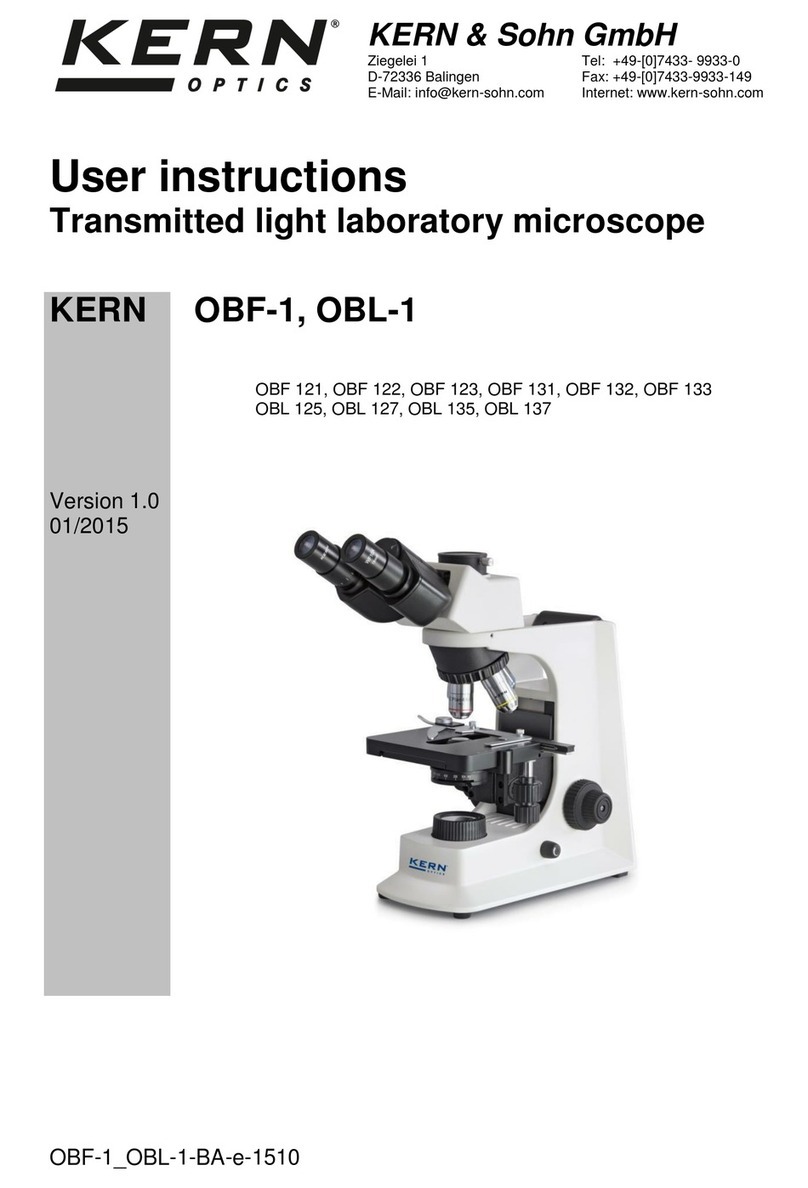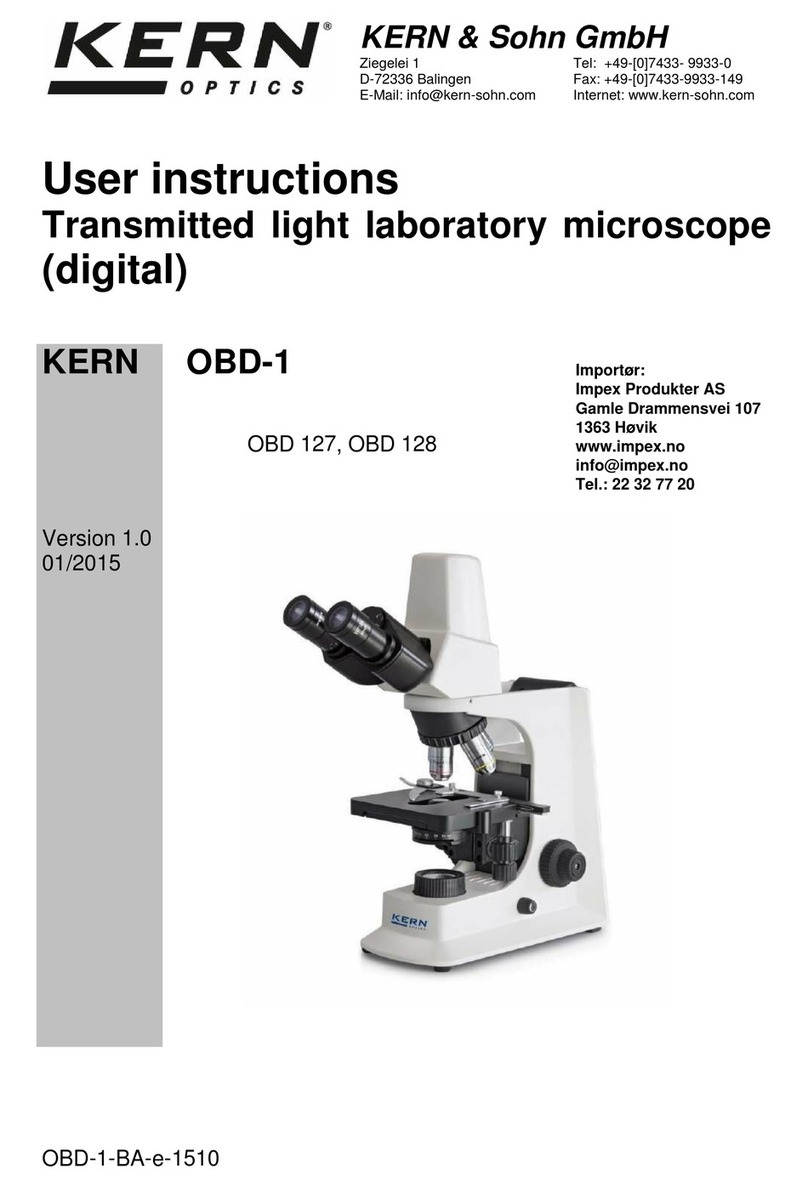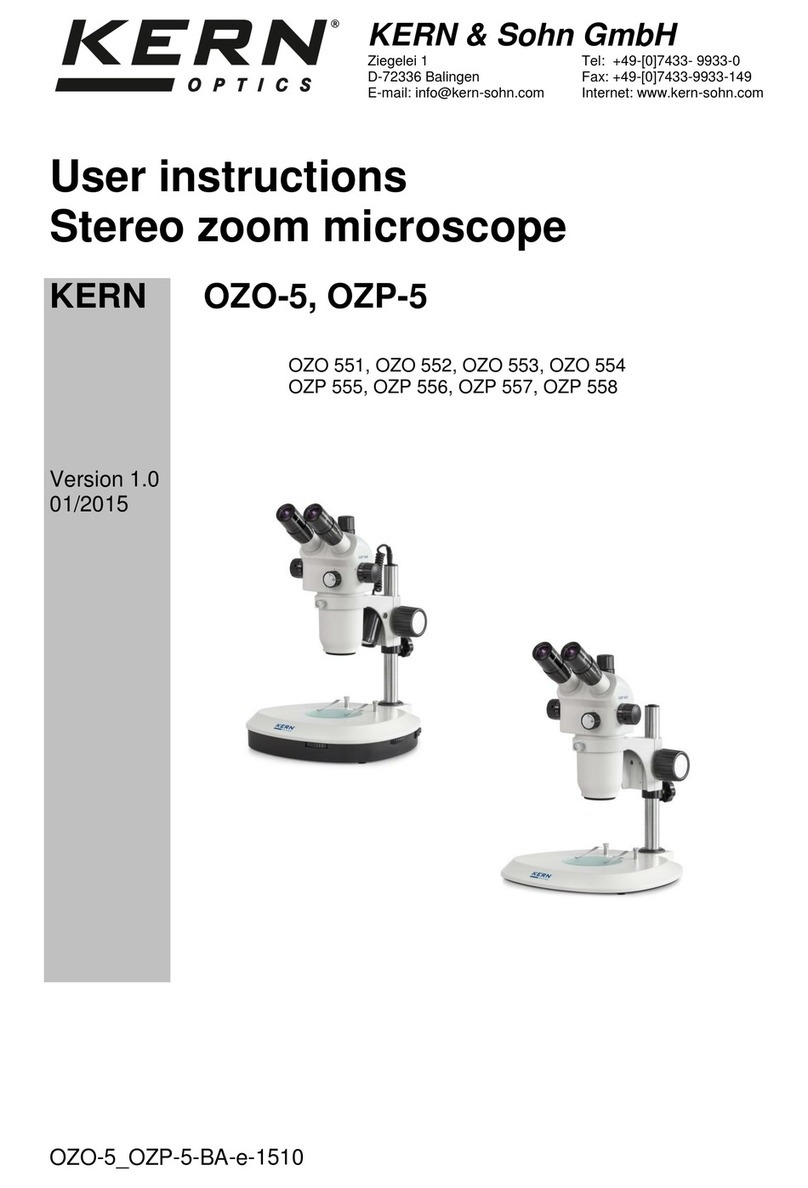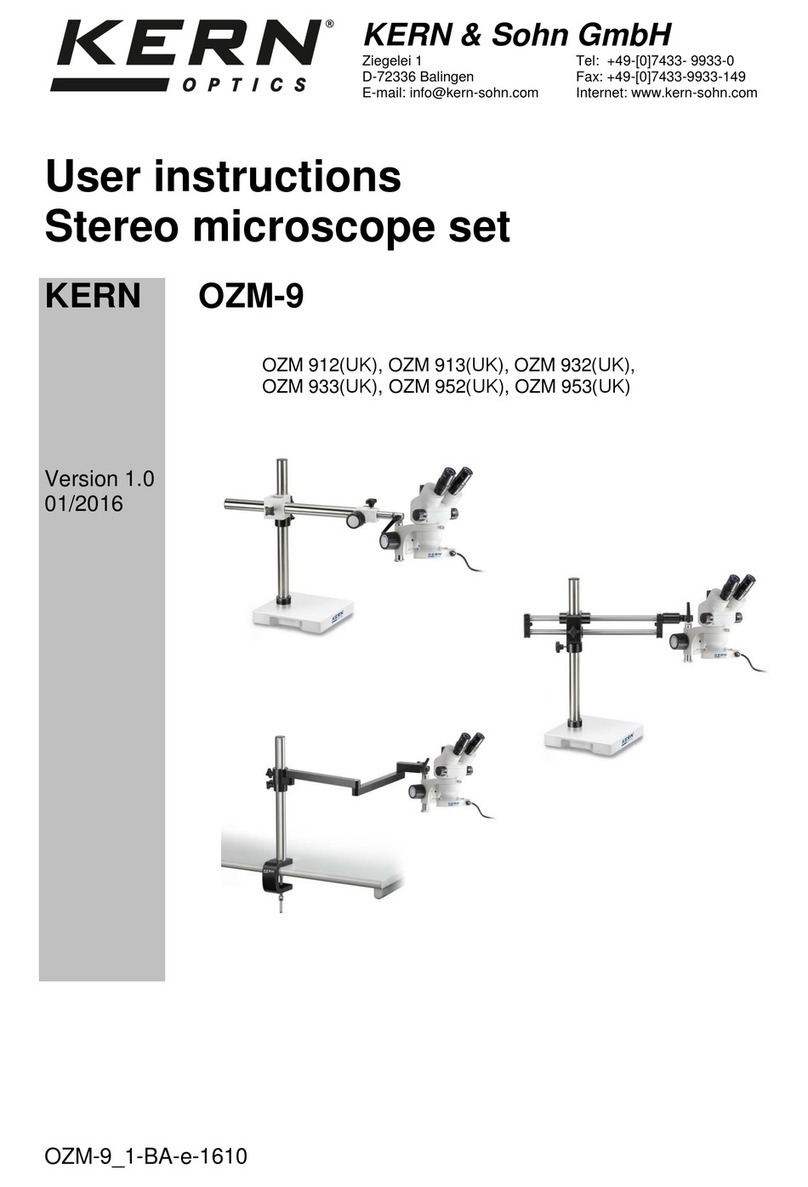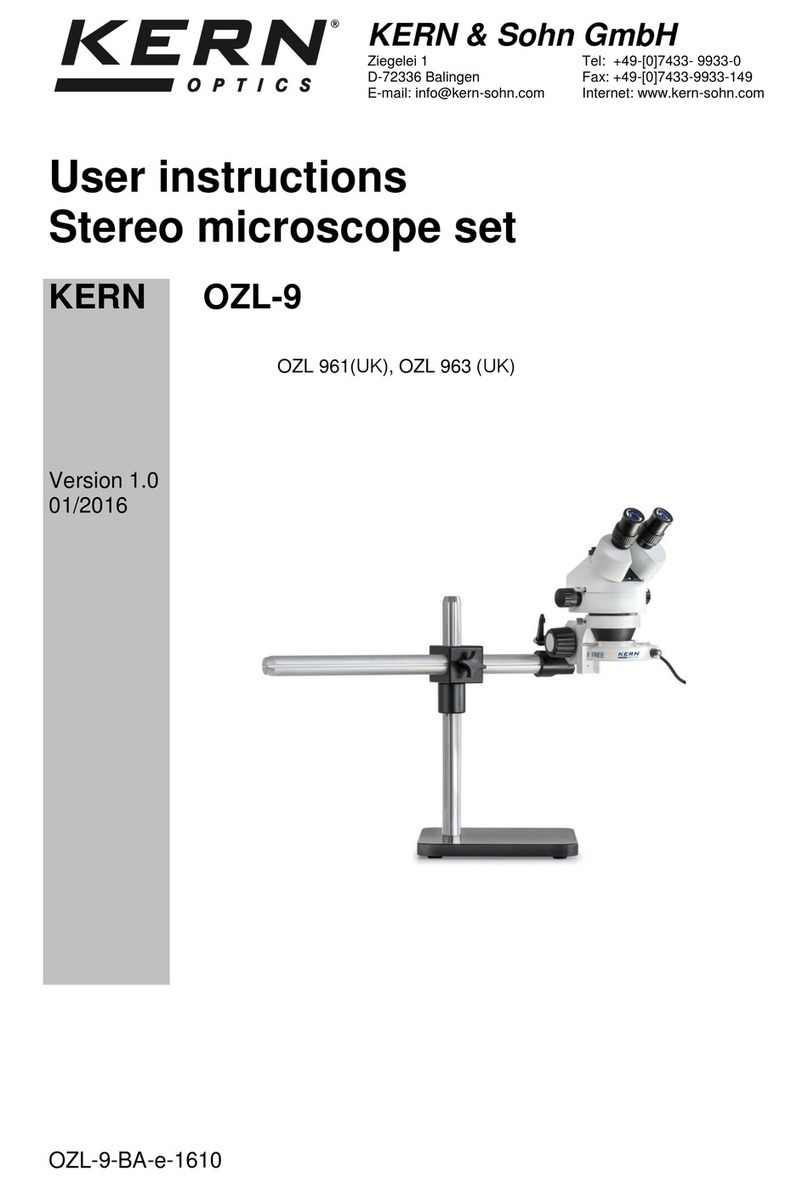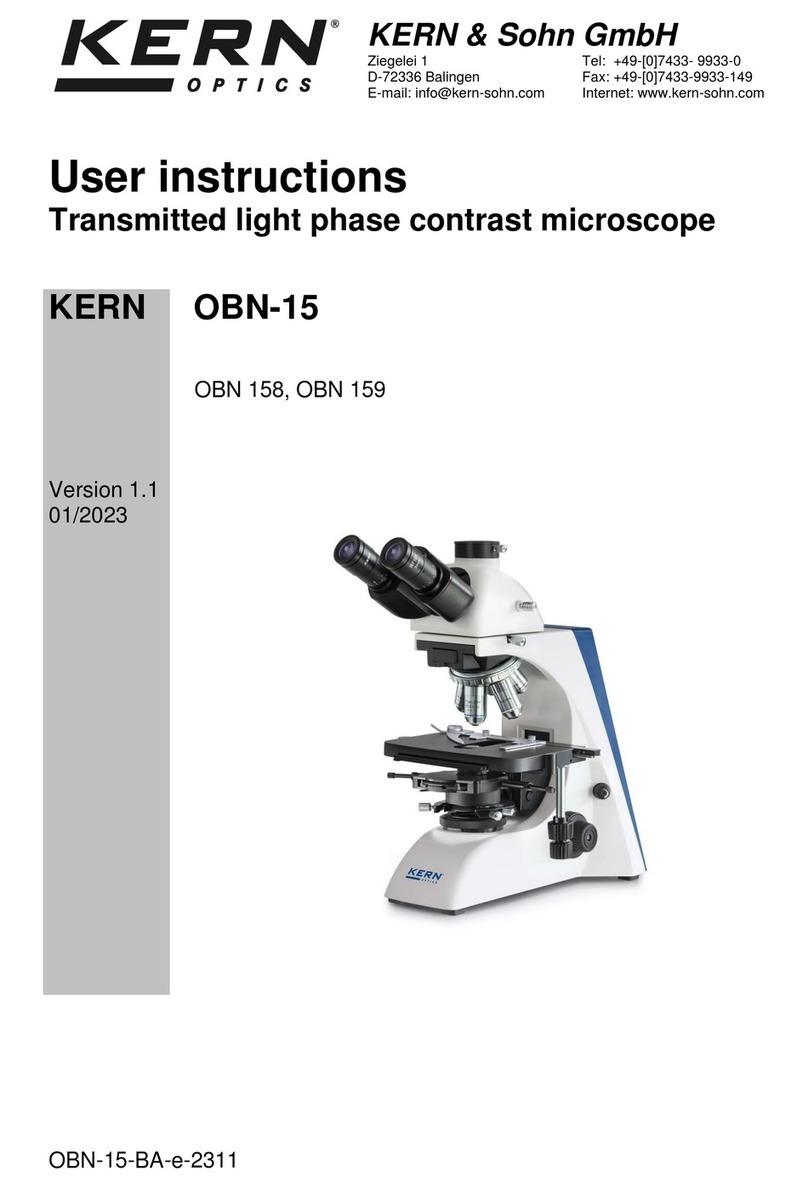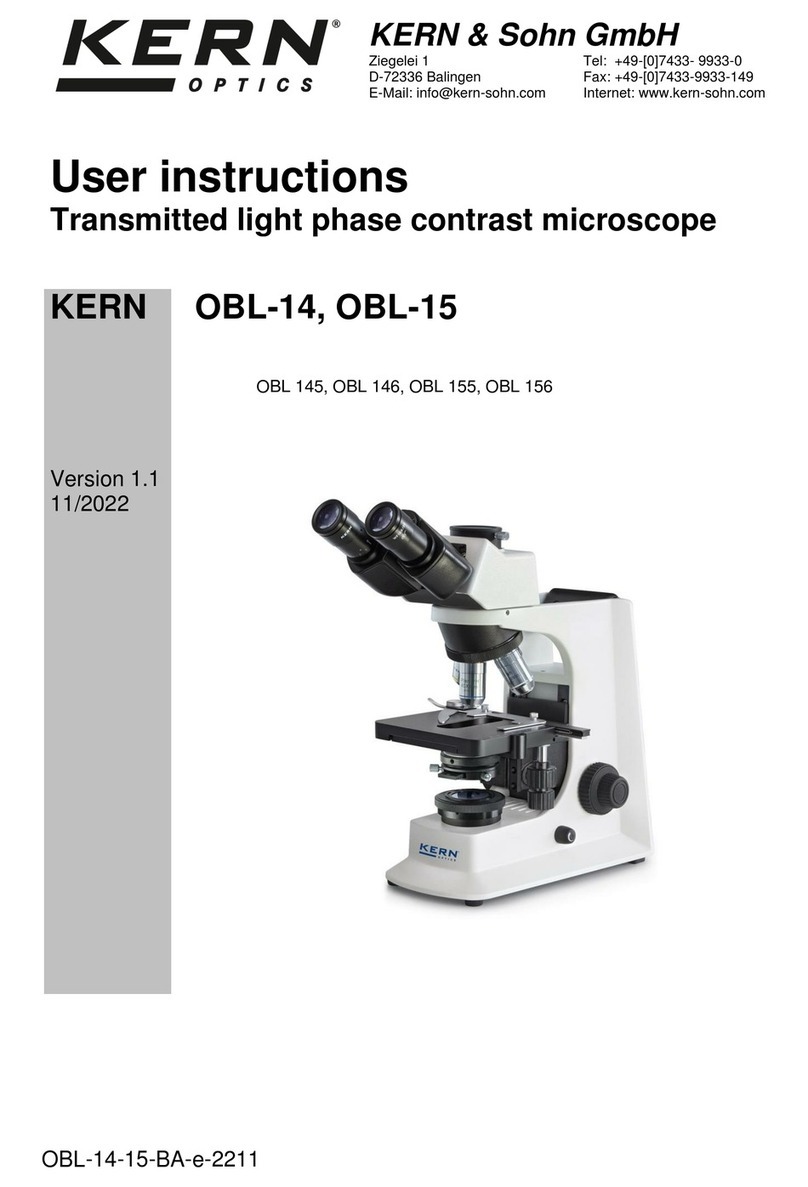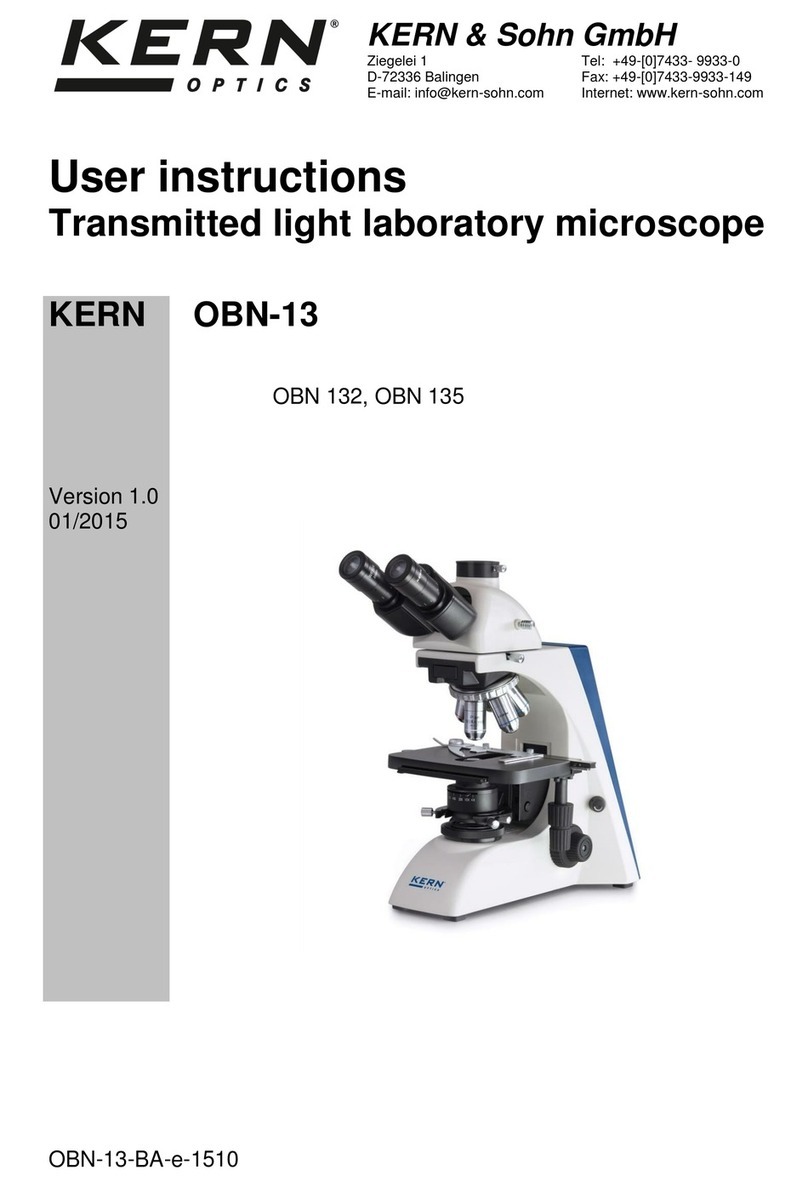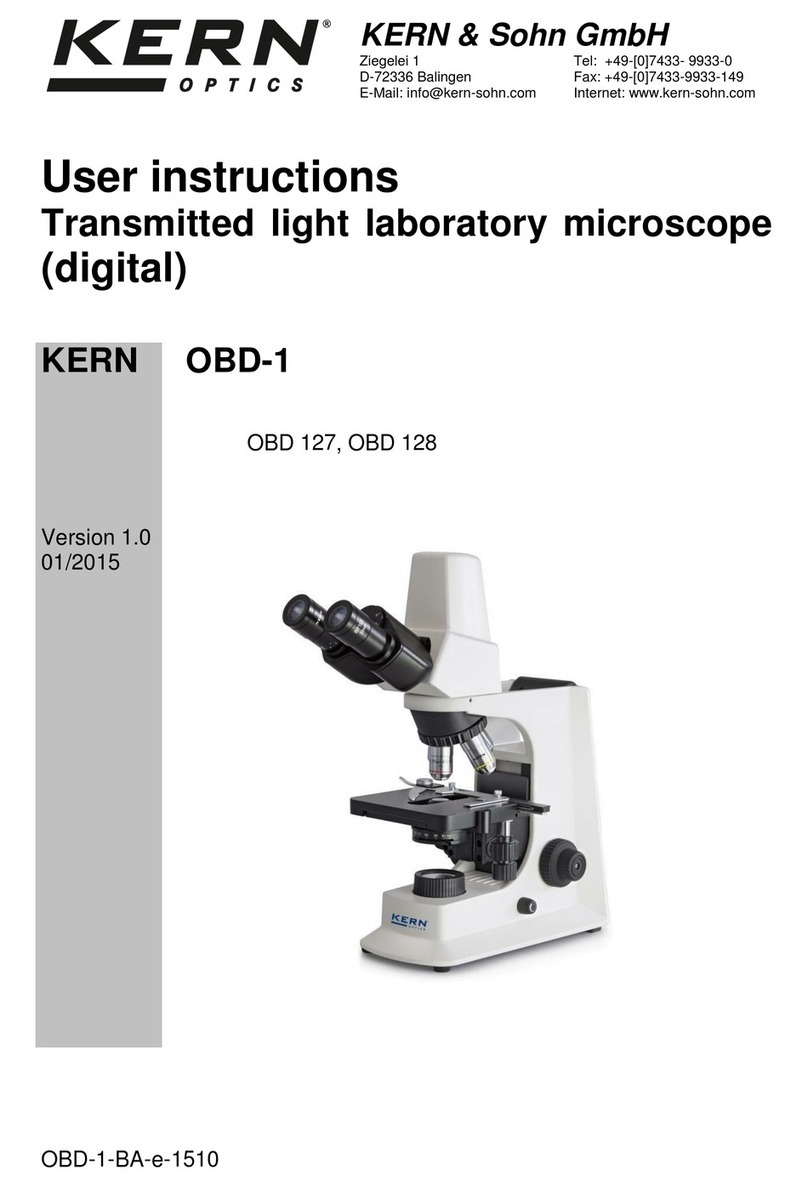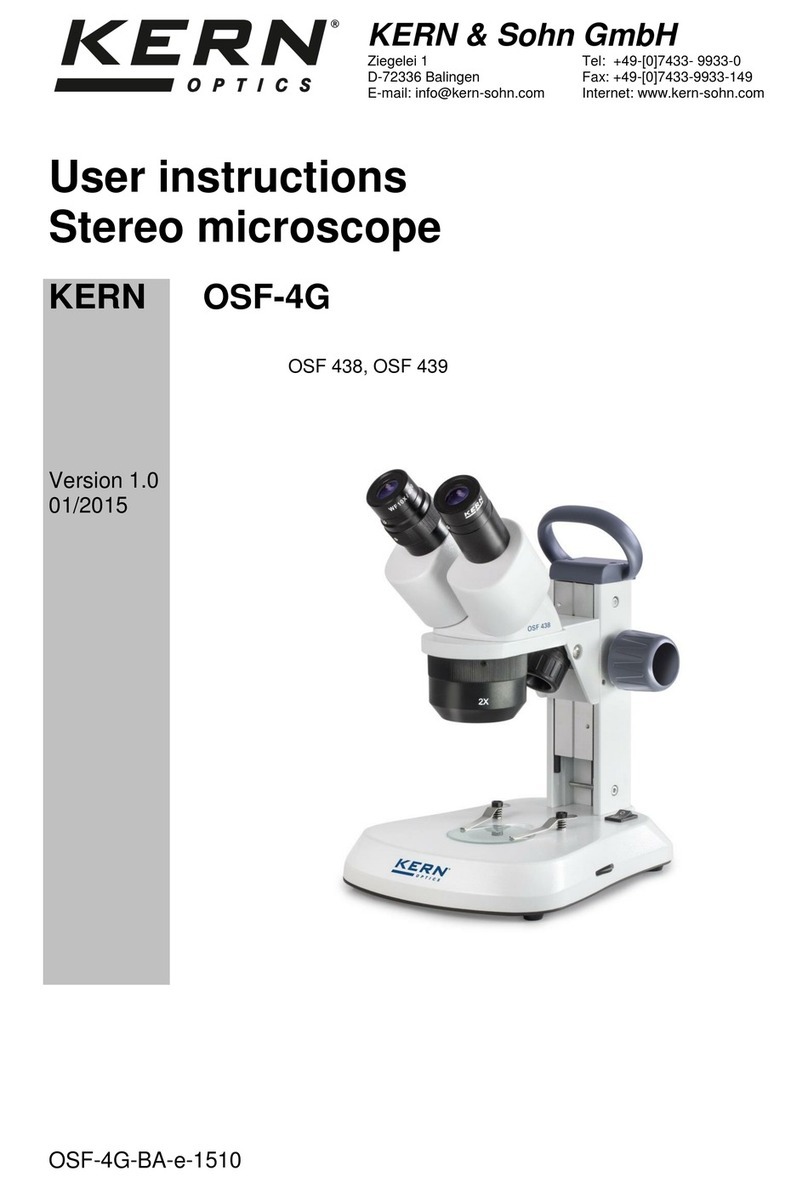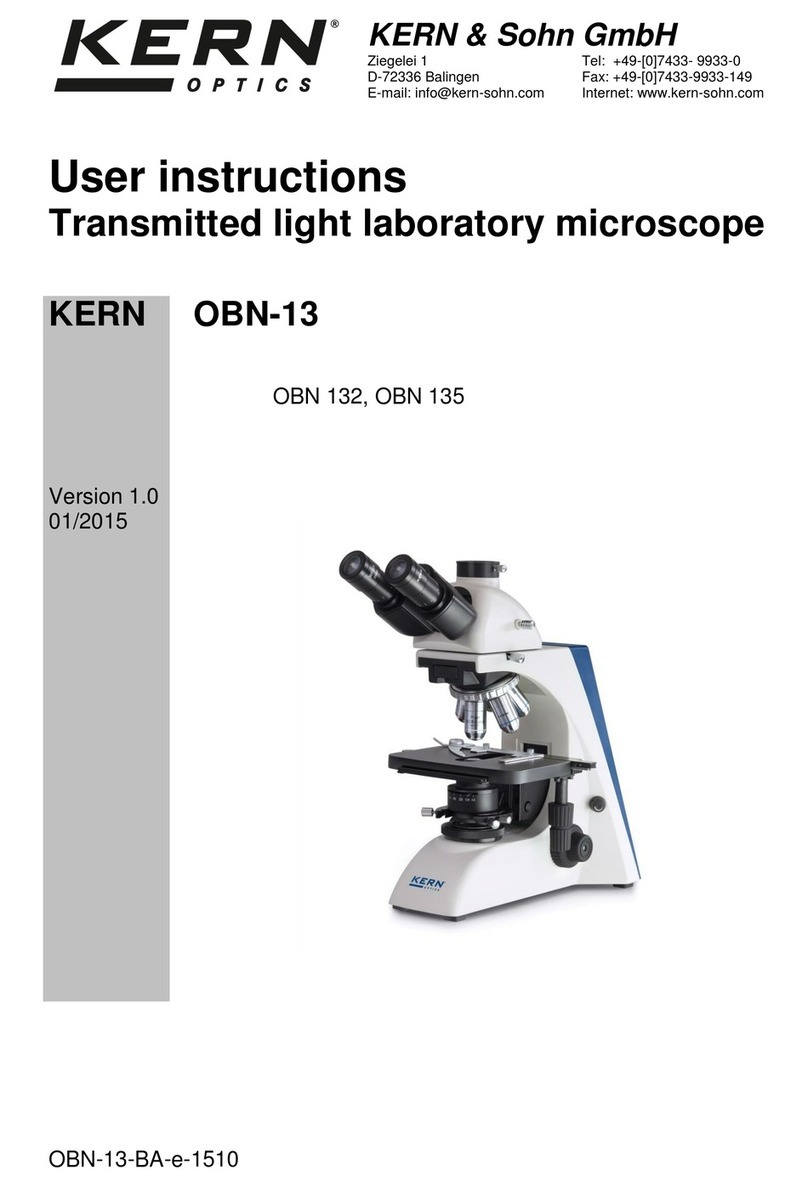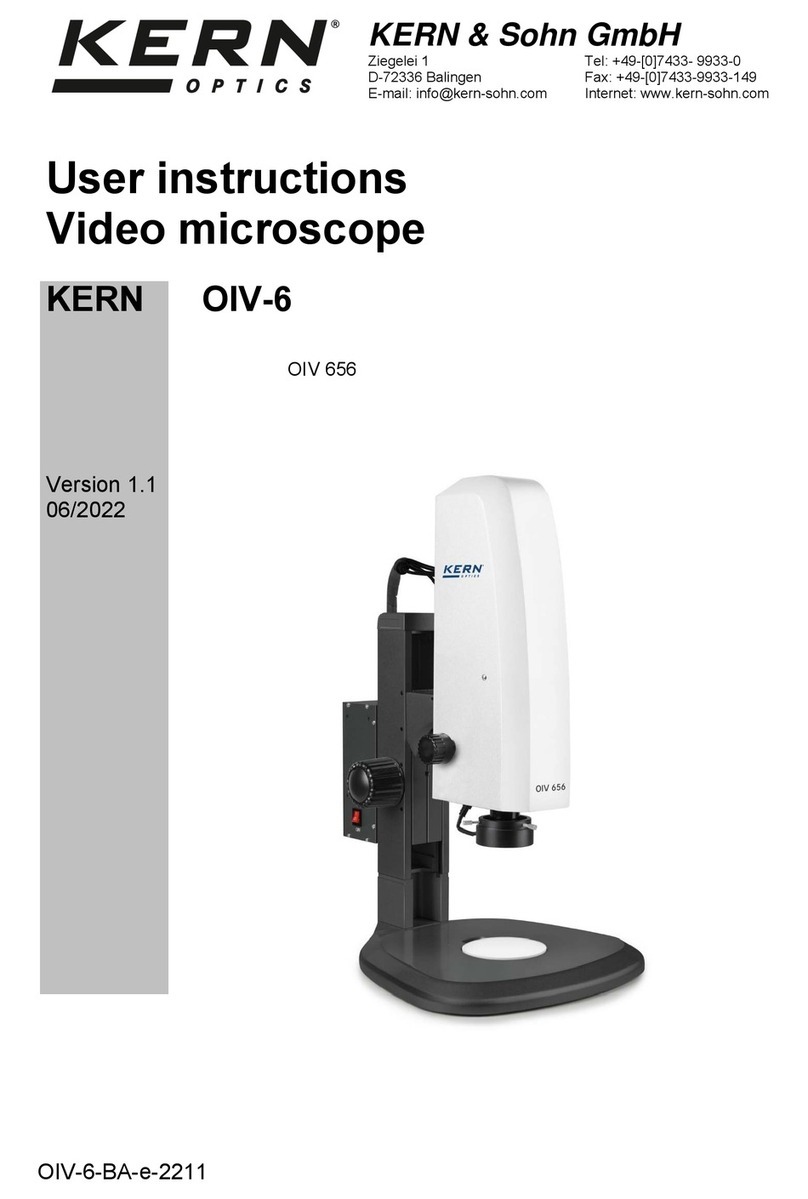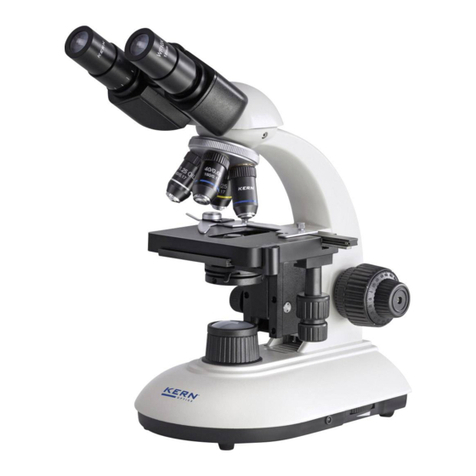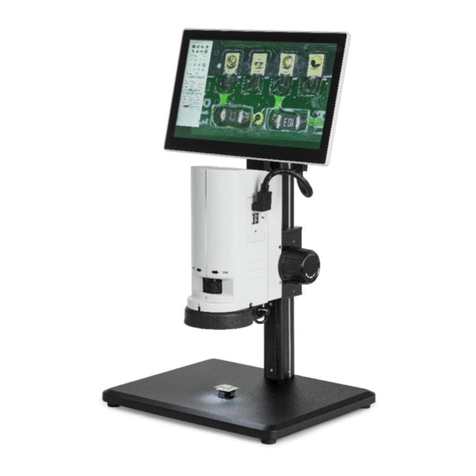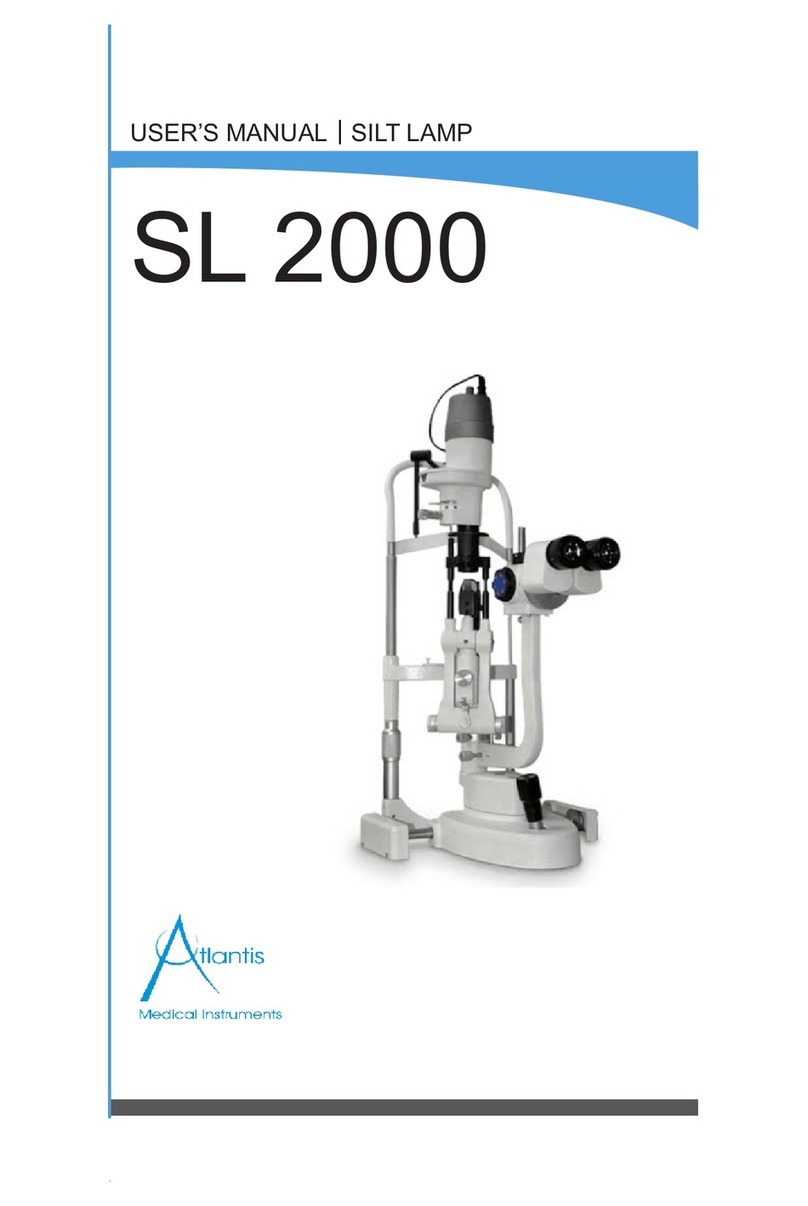
OSE-42-BA-e-1810 2
KERN OSE-42
Version 1.0 11/2018
User instructions
Stereo microscope
Table of contents
1Before use....................................................................................3
1.1 General notes............................................................................................................................ 3
1.2 Notes on the electrical system................................................................................................ 3
1.3 Storage ...................................................................................................................................... 4
1.4 Maintenance and cleaning....................................................................................................... 5
2Nomenclature...............................................................................6
3Basic data.....................................................................................7
4Assembly......................................................................................8
5Operation and functionality.......................................................10
5.1 Getting started........................................................................................................................ 10
5.2 Adjusting the interpupillary distance................................................................................... 10
5.3 Adjusting the magnification.................................................................................................. 10
5.4 Dioptre adjustment and focussing ....................................................................................... 11
5.5 Adjusting the stand................................................................................................................ 11
5.6 Using eye cups / High Eye Point eyepieces ........................................................................ 12
5.7 Lighting control ...................................................................................................................... 13
5.8 Using external illumination units.......................................................................................... 13
5.9 Changing the bulb.................................................................................................................. 14
6Optical data ................................................................................14
7Features......................................................................................14
8Trouble shooting........................................................................15
9Service........................................................................................16
10 Disposal......................................................................................16
11 Further information....................................................................16
